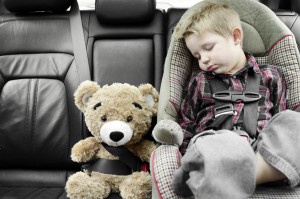 Car-related heatstroke deaths of children are a tragic, preventable and far too common occurrence in the U.S.. San Francisco State University’s Department of Geosciences reports that since 1998, 680 children have died after being left in a car – fourteen of those cases occurred in Maryland. So far in 2016, there have been nineteen heatstroke deaths involving children who were left in cars nationwide.
Car-related heatstroke deaths of children are a tragic, preventable and far too common occurrence in the U.S.. San Francisco State University’s Department of Geosciences reports that since 1998, 680 children have died after being left in a car – fourteen of those cases occurred in Maryland. So far in 2016, there have been nineteen heatstroke deaths involving children who were left in cars nationwide.
Even when fatalities are avoided, brain damage, loss of hearing and/or blindness can occur if a child is exposed to extreme heat and their body temperature rises above 104 degrees.
So how does this happen? Sometimes a child climbs into an unlocked car to play, and is overcome by the heat. But SFSU’s studies show that children one-year old or younger make up 53% of these fatalities, most often forgotten in the back seat by a parent or caregiver.
In just ten minutes, a car’s temperature can rise 19 degrees, and will continue to go up by almost a degree per minute after that. On a mild 75 degree day, the internal car temperature can reach 109 degrees within a half hour. It doesn’t take long for a child to be at risk.
The National Highway Traffic Safety Administration (NHTSA) has launched a “Look Before You Lock” campaign to remind parents to get in the habit of checking the back seat before leaving the car. Here are some of their suggestions for making sure this doesn’t happen to you or your child:
Check the back seat. The simplest way to prevent this is to get in the habit of always checking your back seat before leaving the car.
Give yourself a reminder. Keep a stuffed animal or diaper bag in your field of view in the front seat. Or leave your briefcase, badge, or other item necessary for work, in the back seat with your child. Another idea is to wear a wristband when you put the child in the car, then only remove it once you’ve dropped them off. Figure out what system works for reminding you when you have your child in the car, and stick to it.
Have a plan with you babysitter. Arrange for your daycare provider to call you if your child hasn’t arrived at their location by a certain time. That call could be the reminder that saves your child’s life.
Keep your keys out of reach. Make sure your cars are always locked and the keys are out of the reach of children. Kids love to play in cars and pretend to drive. If they close the door, and you’re unaware that they are in there, your child could be at risk of overheating within ten minutes.
Never leave your child in the car intentionally! Most of these tips are to help parents avoid leaving a child in the car by accident. Unfortunately, 17% of heatstroke deaths since 1998 have been due to a parent intentionally leaving their child in vehicles. You should never leave your child in the car, unattended. Even with the windows cracked, there is not enough air moving to keep the temperatures from rising. “Quick trips” into the store can be just long enough to put your child in danger. (And in most states, depending on the age of the child, it’s illegal to leave them unattended, regardless of the outside temperature).
Keep your eyes open in parking lots. Even if you don’t have a child, you can help prevent this situation. Pay attention as you walk through any parking lot. Keep your eyes open for anything that looks out of the ordinary. If you see a child in a car, unattended, please call 911 right away. Every minute counts!
And please remember, the same goes for our four-legged friends too. Heatstroke is just as dangerous for animals as it is for children.
(sources: San Francisco State University, NHTSA.gov)



